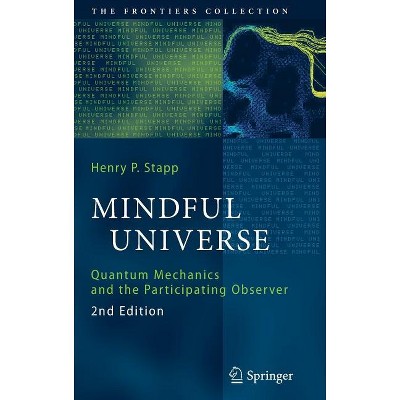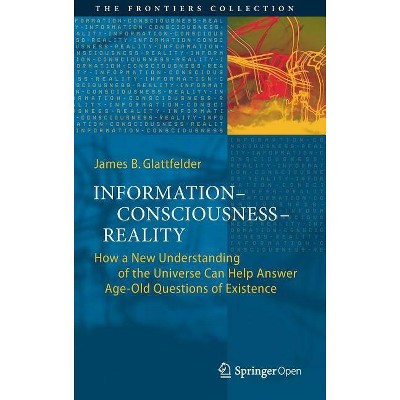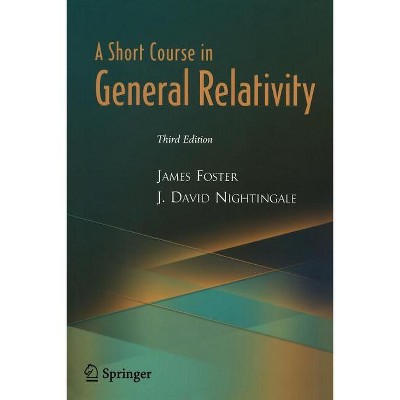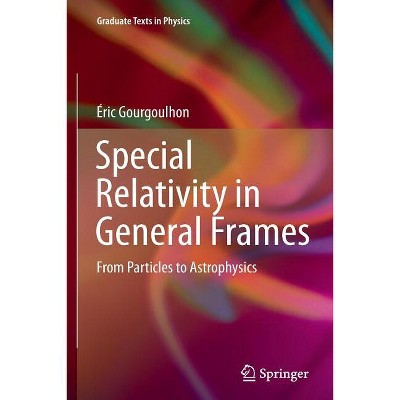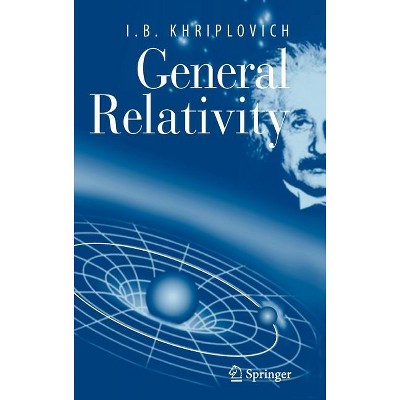Relativity and the Nature of Spacetime - (Frontiers Collection) 2nd Edition by Vesselin Petkov (Hardcover)

About this item
Highlights
- This is not a typical book on relativity.
- About the Author: Presently: Assistant Professor, Science College, Concordia University (in fact, I am associated with three departments - Liberal Arts College, Philosophy Department, and Science College)1984 -1989: Adjunct Professor, Philosophy Department, Sofia University1986 -1989: Researcher, Institute of Philosophy, Bulgarian Academy of SciencesDoctoral degrees in theoretical physics (1997, Concordia University) and philosophy of science (1988, Institute of Philosophy, Bulgarian Academy of Sciences).
- 316 Pages
- Science, Physics
- Series Name: Frontiers Collection
Description
About the Book
This book develops a thorough analysis of relativistic effects to address the question of what is the nature (the ontological status) of spacetime. In this new edition, arguments are strengthened, and new developments in the field are presented and integrated.
Book Synopsis
This is not a typical book on relativity. It puts the emphasis on conceptual questions: Why is there no such thing as absolute motion? What is the physical meaning of relativity of simultaneity? But, the most important question that is addressed in this book is "what is the nature of spacetime?" or, equivalently, "what is the dimensionality of the world at the macroscopic level?" The answer to this question is developed via a thorough analysis of relativistic effects and explicitly asking whether the objects involved in those effects are three-dimensional or four-dimensional. This analysis clearly shows that if the world and the physical objects were three-dimensional, none of the kinematic relativistic effects and the experimental evidence supporting them would be possible. The implications of this result for physics, philosophy, and our entire world view are discussed.
From the Back Cover
The most important question that is addressed in this book is "what is the nature (the ontological status) of spacetime?" or, equivalently, "what is the dimensionality of the world at the macroscopic level?" The answer to this question is developed via a thorough analysis of relativistic effects and explicitly asking whether the objects involved in those effects are three-dimensional or four-dimensional. This analysis clearly shows that if the world and the physical objects were three-dimensional, none of the kinematic relativistic effects and the experimental evidence supporting them would be possible. The implications of this result for physics, philosophy, and our entire world view are discussed. This new edition has been significantly expanded with new sections, appendices, notes and references. The arguments of the previous edition are strengthened; new developments in the field are presented and integrated to yield a thoroughly convincing and clear treatment.
Review Quotes
From the reviews of the second edition:
"The book under review is mainly devoted to the physical consequences of special relativity and to the unveiling of the very nature of spacetime. ... The book is clear and well written and the bibliographic references are very good. It is recommended to physicists and to philosophers of science." (Francesco Sorge, Mathematical Reviews, Issue 2011 i)About the Author
Presently: Assistant Professor, Science College, Concordia University (in fact, I am associated with three departments - Liberal Arts College, Philosophy Department, and Science College)
1984 -1989: Adjunct Professor, Philosophy Department, Sofia University
1986 -1989: Researcher, Institute of Philosophy, Bulgarian Academy of Sciences
Doctoral degrees in theoretical physics (1997, Concordia University) and philosophy of science (1988, Institute of Philosophy, Bulgarian Academy of Sciences).






